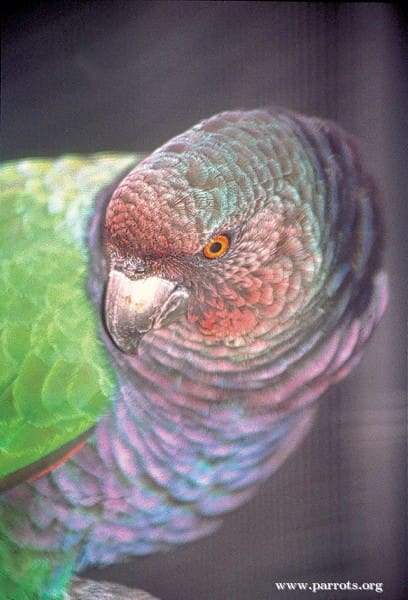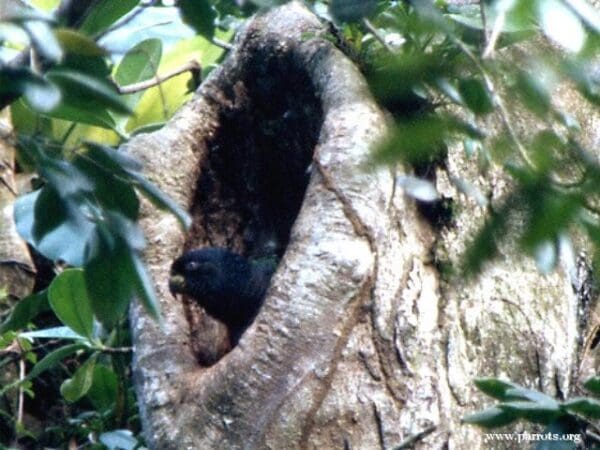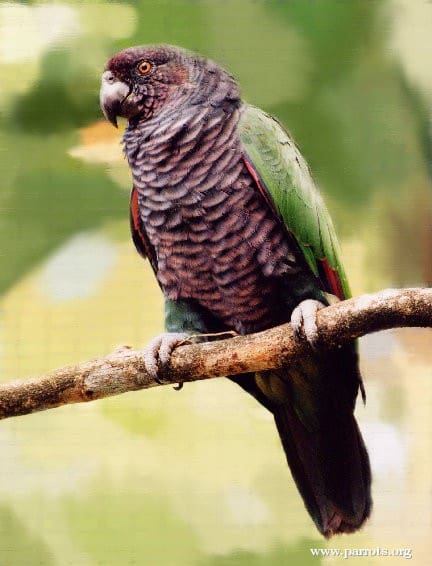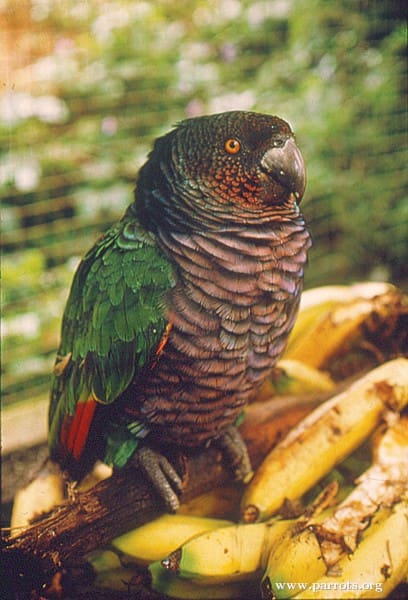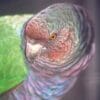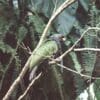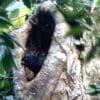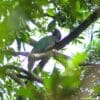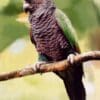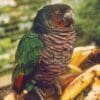Imperial Amazon
Also known as:
Sisserou, August Amazon (Parrot), Dominican Amazon (Parrot)
Also known as:
Sisserou, August Amazon (Parrot), Dominican Amazon (Parrot)
DID YOU KNOW?
The Imperial Amazon is the largest of the Amazons at 45 cm (17.5 in), and 900 g (31.5 oz).

Amazona

imperialis
Size:
48 cm (18.7 in)
Weight:
900 g (31.5 oz) – males; 650 g (22.75 oz) – females
Subspecies including nominate:
one
Colour Adult:
Both adults brown/purple forehead and lores, becoming browner on cheeks to ear coverts; burgundy/maroon crown and neck, washed with green/blue, the feathers edged with black; breast and abdomen dark lilac/purple, the feathers edged dusty black; olive/green lower underparts, feathers tipped green/blue; upperparts dark green, feathers edged black; secondary feathers 1-3 dark burgundy at bases, the remaining secondaries green; red carpal edge; tail red/brown. Beak grey/horn. Eye-ring grey/brown, eye orange/red.
Colour Juvenile:
As in adult but duller; face dull red/brown; occiput to hindneck green; area behind cheeks tinged with green. Eye brown.
Call:
Wide variety of calls including whistles, shrieks and squawks. Often loud, but also can be squeaky.
Content Sources:
CITES
BirdLife International
Cornell Lab of Ornithology/Birds of the World
A Guide to Parrots of the World, Juniper and Parr, 1998
Parrots of the World, Forshaw and Cooper, 1989. 2010 edition
Parrots of the World, Forshaw, 2006.
Captive Status:
Extremely rare
Longevity:
50-60 yrs
Housing:
Outside flight if possible – 10 x 3 x 2.5 m (32.8 x 9.8 x 8.2 ft); inside enclosure 3 x 3 x 2.5 m (9.8 x 9.8 x 8.2 ft). Metal construction necessary.
Diet:
Not recorded but assumed to be mainly the same as other Amazon parrots with care not to feed high fat diet: fruit such as: apple, pear, orange, cactus fruit, pomegranate, forming about 30 % of diet; vegetables such as: carrot, celery, green peas and beans; green leaves such as: Swiss chard, kale, dandelion, chickweed; fresh corn; spray millet, small seed mixture (lower fat, limited sunflower); peanuts occasionally; complete kibble.
Enrichment:
Provide lots of chew and forage items – bird-safe wood such as fir, pine, elder or willow, wood block toys vegetable tanned leather toys, heat sterilised pine cones; also enjoys bathing so provide overhead misters or shallow water bowls.
Nest Box Size:
Nest box 14″ x 14″ x 48″ (35.5 cm x 35.5 cm x 122 cm).
Clutch Size:
2
Fledging Age:
—
Hatch Weight:
—
Peak Weight:
—
Weaning Weight:
—
World Population:
About 50 mature individuals, declining.
IUCN Red List Status:
Critically Endangered
CITES Listing:
Appendix I
Threat Summary:
BirdLife ‘restricted-range’ species. Beginning around 1880, the species declined rapidly because of trapping, hunting and habitat loss. After some recovery, since 1979 hurricanes, most recently Maria, have dropped the population to an all-time low. These extreme events lead to widespread habitat destruction and direct mortality.
Range:
Island of Dominica (Lesser Antilles).
Habitat:
Occurs in the canopy of primary mountain rainforest; occurs at 600-1300 m (1968-4264 ft) but will descend in response to food shortages or foraging preferences.
Wild Diet:
Flowers, fruits, nuts and young shoots of many trees, including Dacryodes, Licania, Richeria, Amanoa, Simarouba, Symphonia, Pouteria, Tapura and Clusia.
Ecology and Behaviour:
Communal roosts; feeds morning and evening; probably defends nesting territory year round.
Clutch and Egg Size:
2 eggs, 45 x 40 mm (1.7 x 1.6 in).
Breeding Season:
February-June. Nest is in cavity in tree, notably Dacryodes excelsa and Sloanea berteriana.
Related Links:
—
